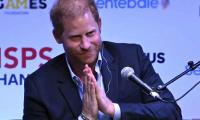From time immemorial, people have plotted together, unlawfully, treacherously, and surreptitiously, in order to further generally nefarious objectives. In other words, conspiracies happen.
Sometimes they never come to light; more often, they do, but only after, sometimes long after, they are executed or aborted. And sometimes they happen in plain view.
The term has negative connotations. Inasmuch as conspirators generally conspire for what they take to be worthwhile purposes, this is odd, to say the least. But the dictionaries insist.
Those who speak of “conspiracy theories” nowadays seldom dwell on conspirators’ surreptitiousness or treachery. This hardly casts the term in a more positive light, however. Conspirators’ evil ways may not be Topic A, but their craziness is. It is the kind of craziness commonly associated with paranoia.
It goes without saying that the conspiracy theories we have lately heard so much about are almost always false, usually in obvious, but not always in uncomplicated, ways.
Like paranoid delusions, good conspiracy theories fit the known facts, or some pertinent subset of them, tolerably well. They could even be defended for putting the facts they focus upon together in more cogent ways than more plausible explanations do. This is especially the case when the more plausible explanations are incomplete or otherwise problematic.
For example, because there were oddities about the way the buildings collapsed in the 9/11 attack on the World Trade Center that could arguably be accounted for better by explosive devices on site than by the televised collision with a highjacked airliner, conspiracy theories started appearing almost from Day One. Inasmuch as the collision was seen by millions, countless times as the cable networks replayed their video evidence, it was hard to deny that a collision occurred.
One would expect that this would have stopped conspiracy theorists in their tracks. Perhaps it has to some extent, but not one hundred percent. When determined, conspiracy theorists are nothing if not ingenious.
Their ingenuity often works because there are usually ways to combine conspiracy theories with evidence that even the most gullible people are unable entirely to reject.
Thus, with 9/11, it was sometimes argued that even if the video evidence wasn’t entirely made up – photo shopped, as it were, concocted just to mislead the public and to throw investigators off track – that the planes that collided with the buildings were not what ultimately brought those building down; that, contrary to what people saw, explosive devices planted by terrorists within the buildings themselves were responsible for that.
Why go out on that limb? Part of the explanation may be that conspiracy theorists are contrarian by nature. A larger part is that they also tend to be wedded to fixed, ideologically or theologically driven beliefs that they will stand by come what may.
Being generally more interested in getting people to think in certain ways than in discovering or clarifying what is or was actually the case, why would they not? Thus, conspiracy theories are almost always tendentious, if not downright fraudulent.
Because their proponents take themselves to be accountable, above all, to political agendas, rather than to getting matters of fact right, they are therefore often indifferent to the truth, except insofar as true claims are generally more convincing than false ones.
In this, as in so much else of political consequence, ironies abound. Thus, except in those comparatively rare instances in which conspiracy theories are contrived in propaganda mills or their functional equivalents in order to bring about certain results, conspiracy theories seldom have much to do with actual conspiracies, in the strictest sense of the term.
When they function politically, it is more usually in the course of spontaneously evolving turns of events than, as would be the case were plotters behind the goings on, with thoughtful determination.
The idea that Trump, not Biden, actually won the last election, ‘the Big Lie’, as it has come to be called, is an extreme example.
There is not a scintilla of evidence supporting that contention (unless the ‘gut feelings’ of Trump besotted cultists count). Moreover, of the sixty-two lawsuits Trump and his allies have filed challenging the presidential election, sixty-one have failed – dismissed on the merits or for lack of standing. The one that more or less succeeded was on a minor point of no real consequence.
Many of the courts that rejected Trump’s pleadings, including the Supreme Court, are packed with Trump-appointed judges, few if any of whom are paragons of honesty or good sense, and all of whom were vetted by Trump operatives for loyalty to the Dear Leader wannabe.
But the Big Lie exceeds even their capacity to sign on to the all-consuming mendacity that Trump exudes. And so, we got the court rulings we did.
“Too much light blinds us,” wrote Blaise Pascal (1623-1662). He meant that, in the extreme, things turn into their opposite, a point that made him one of the “founding fathers,” as it were, of the dialectical logic that Hegel and Marx and many others would later put to use.
Could some lies be so transparently false that, even if, in the extreme, they do not quite turn into their opposite, they stop functioning as lies altogether? This is what seems to have happened with the Big Lie; it has become nothing more than a rallying cry for those who care a lot about keeping America on an authoritarian track and could care less about the truth.
Getting that idea across would be the best, perhaps the only, chance that proponents of, say, the QAnon conspiracy theory have for coming out of the current glut of bruhaha that they, egged on by liberals hellbent on ridiculing them, have generated, without looking like a bunch of raving lunatics.
Excerpted from ‘ Conspiracy theories’. Courtesy: Counterpunch.org
As usual, any such deal, aiming to resuscitate ailing economy, brings to fore urge and resolve to halt further...
A representational showing sticky notes on a board. — Unsplash/FileThere are some common themes from the lives...
Whether the Daanish Schools effort has been able to live up to its principles or not may be debatable
According to the federal government, last year 653,100 people experienced homelessness on a single night in America
Another advantage for Pakistan is the enhanced teledensity and internet penetration
Both media spheres need to dovetail in amplifying the urgency of addressing climate change at the local, national, and...







